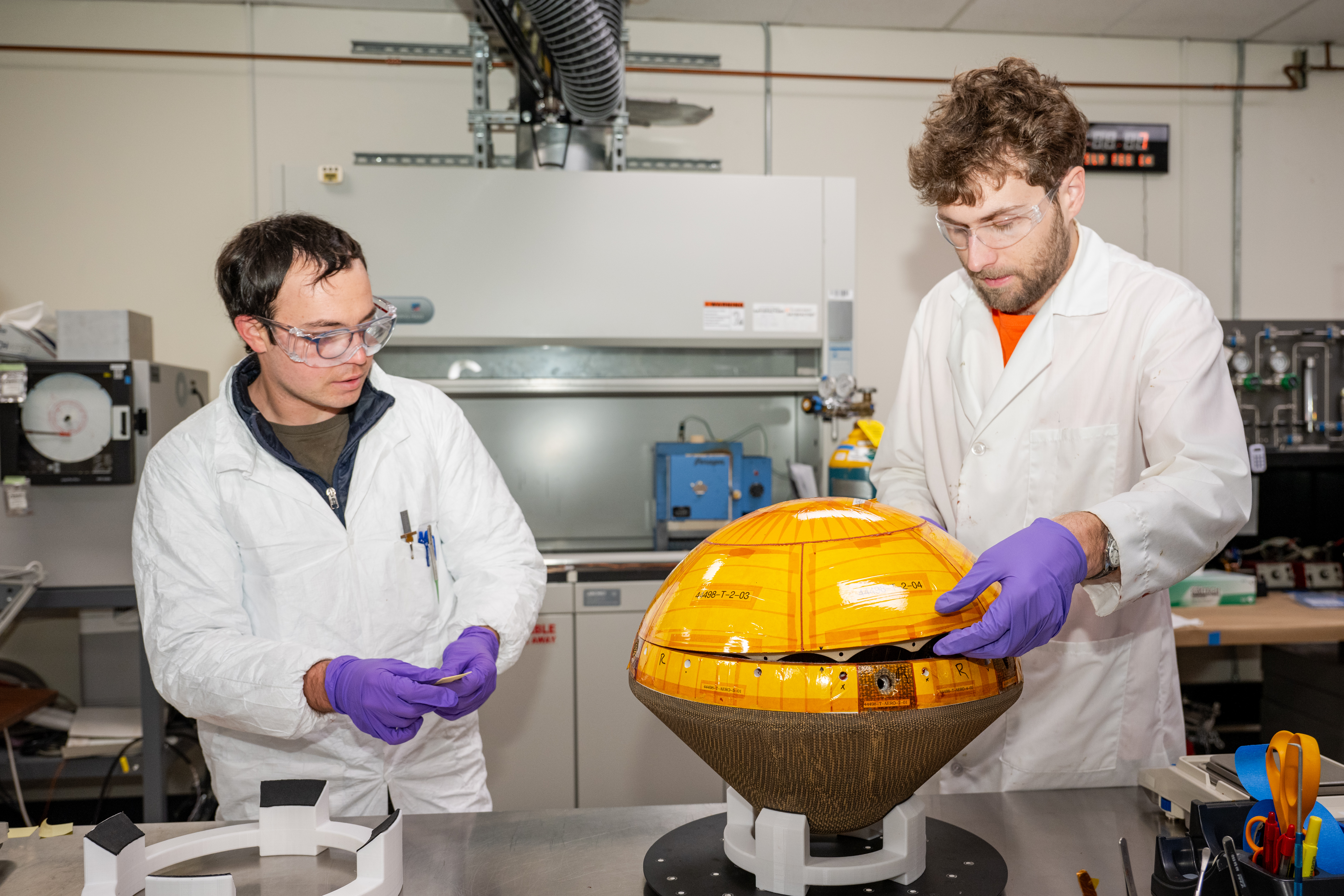Venus Express
Type
Launch
Target
Objective
What was Venus Express?
Venus Express was the first European spacecraft to orbit Venus. The original mission was expected to last no more than 500 Earth days, but the mission was extended five times.
| Nation | United States of America (USA) |
| Objective(s) | Venus Orbit |
| Spacecraft | VEX |
| Spacecraft Mass | 2,800 pounds (1,270 kilograms) |
| Mission Design and Management | ESA |
| Launch Vehicle | Soyuz-FG + Fregat (no. Zh15000- 010 + 14S44 no. 1010) |
| Launch Date and Time | Nov. 9, 2005 / 03:33:34 UT |
| Launch Site | GIK-5 / Site 31/6 |
| Scientific Instruments | 1. Analyzer of Space Plasma and Energetic Atoms (ASPERA) 2. Venus Express Magnetometer (MAG) 3. Planetary Fourier Spectrometer (PFS) 4. Ultraviolet and Infrared Atmospheric Spectrometer (SPICAV/SOIR) 5. Venus Radio Science Experiment (VeRa) 6. Visible and Infrared Thermal Imaging Spectrometer (VIRTIS) 7. Venus Monitoring Camera (VMC) |
Firsts
- First European spacecraft to orbit Venus
Key Dates
Nov. 9, 2005: Launch
April 11, 2006: Venus orbit insertion
Nov. 28, 2014: Contact lost
Dec. 16, 2014: ESA officially announced end of the mission
In Depth: Venus Express
ESA's Venus Express was designed to study the atmosphere of Venus, its plasma environment and surface characteristics from a 24-hour near-polar elliptical orbit.
The spacecraft was launched by a Soyuz-FG/Fregat combination owned by Starsem, a French company which markets a European version of the Russian Soyuz.
The Soyuz-FG delivered the payload into a low Earth orbit, with the Fregat firing a second time 96 minutes after launch to send the entire stack out of Earth orbit toward Venus.
The spacecraft arrived at Venus on April 11, 2006, after a five-month journey.
The main engine fired at 07:10:29 UT (spacecraft time) to insert Venus Express into orbit around the planet, thus becoming the first European spacecraft to orbit Venus. It achieved its operational orbit of about 155 × 41,000 miles (250 × 66,000 kilometers) by May 7, 2007.
The original Venus Express mission was planned to last no more than 500 Earth days, but the mission was extended five times: to May 2009, to December 2009, to December 2012, to 2014 and finally to 2015.
Among the spacecraft’s initial accomplishments was to generate a complete temperature map of the southern hemisphere of Venus by December 2006.
Other major findings included evidence for past oceans on the surface of Venus, a higher prevalence of lightning on Venus than Earth, and the discovery of a huge double atmospheric vortex at the south pole of the planet.
In 2011, scientists studying data from Venus Express reported the existence of a layer of ozone in the upper atmosphere.
After eight years in orbit, as propellant supplies to maintain its elliptical orbit began running low, routine science experiments were concluded May 15, 2014.
Mission scientists decided to undertake a series of aerobraking maneuvers during which the spacecraft would dip deeper into the atmosphere than it had before. The duration of these dips was about 100 seconds with a maximum dynamic pressure that probably was a record for a spacecraft still orbiting a planetary body.
After about a month of surfing in and out of the atmosphere, during which critical data was collected on the effects of atmospheric drag and heating, the spacecraft performed a 15-day climb beginning July 12, 2014. The climb ended by reaching an orbit with the lowest point of about 285 miles (460 kilometers).
Having reached this point, the orbit of Venus Express decayed naturally the remainder of the year. There was an attempt in late November to arrest the decay but contact with the spacecraft was lost Nov. 28, 2014, with only intermittent telemetry and telecommand links after that point.
On Dec. 16, 2014, ESA officially announced the end of the mission although a carrier signal was still being received. The last time that this X-band carrier signal was detected was Jan. 19, 2015, suggesting that the orbiter burned up in the atmosphere soon after.
Additional Resources
European Space Agency: Venus Express
National Space Science Data Center Master Catalog: Venus Express
Key Source
Siddiqi, Asif A. Beyond Earth: A Chronicle of Deep Space Exploration, 1958-2016. NASA History Program Office, 2018.


































